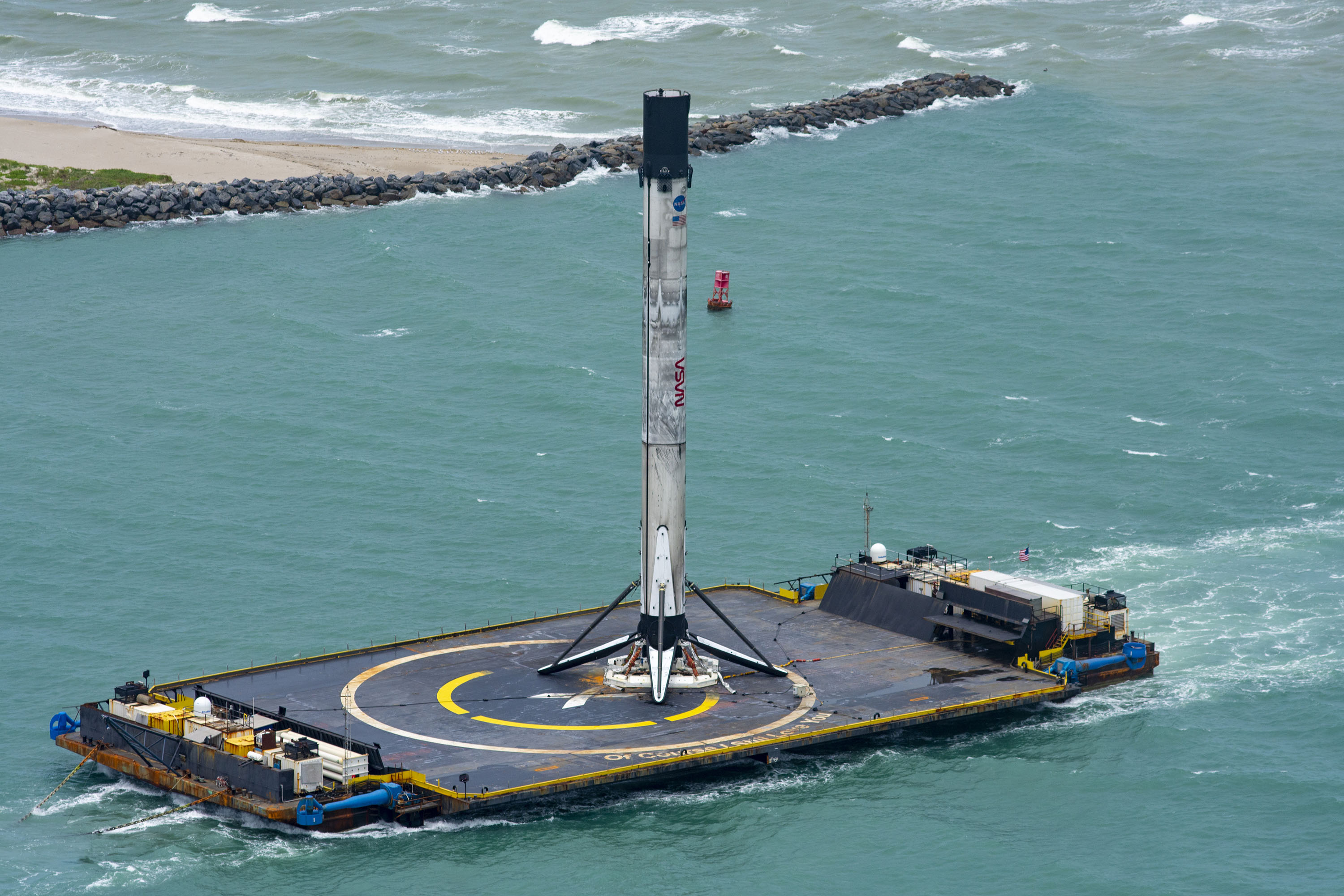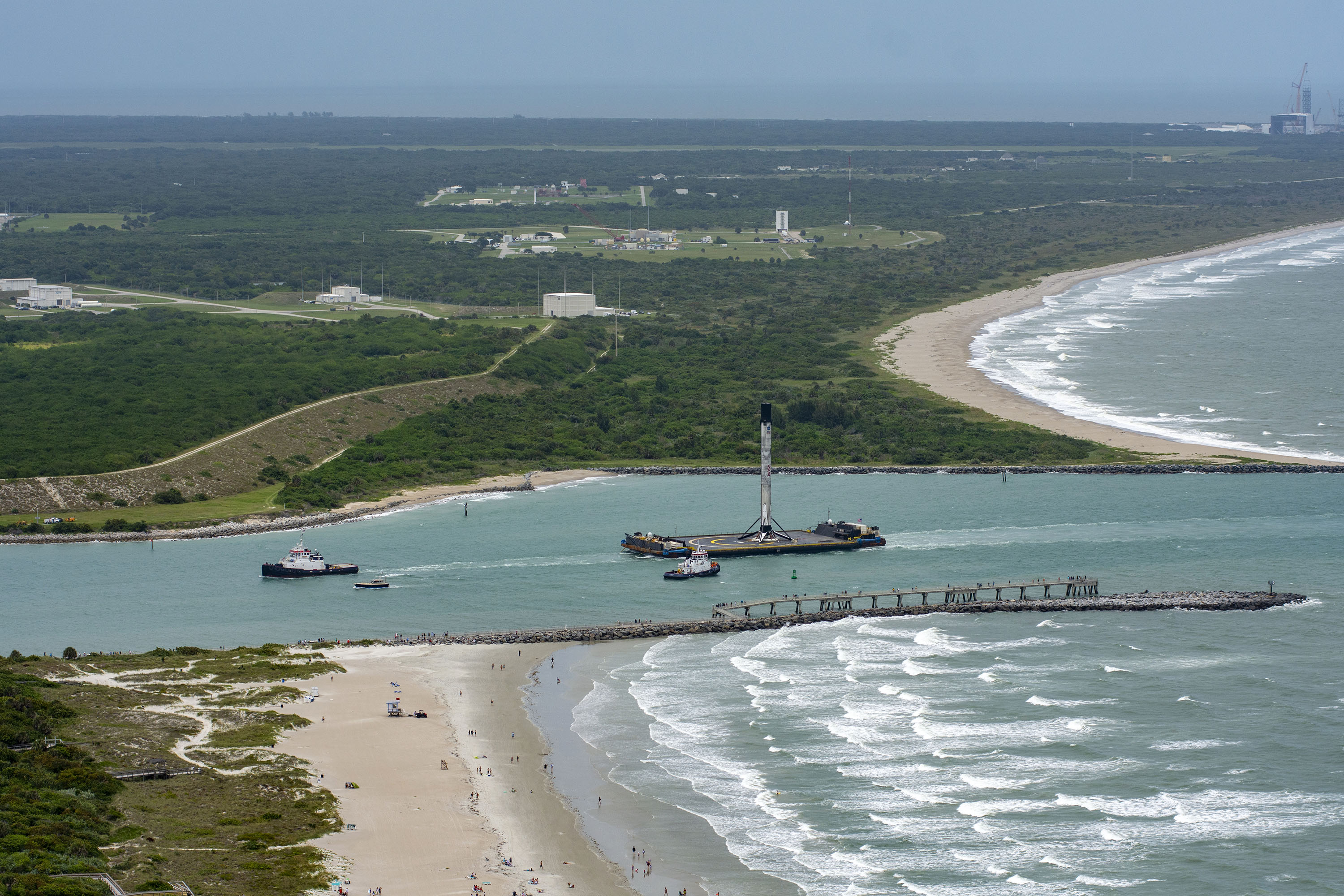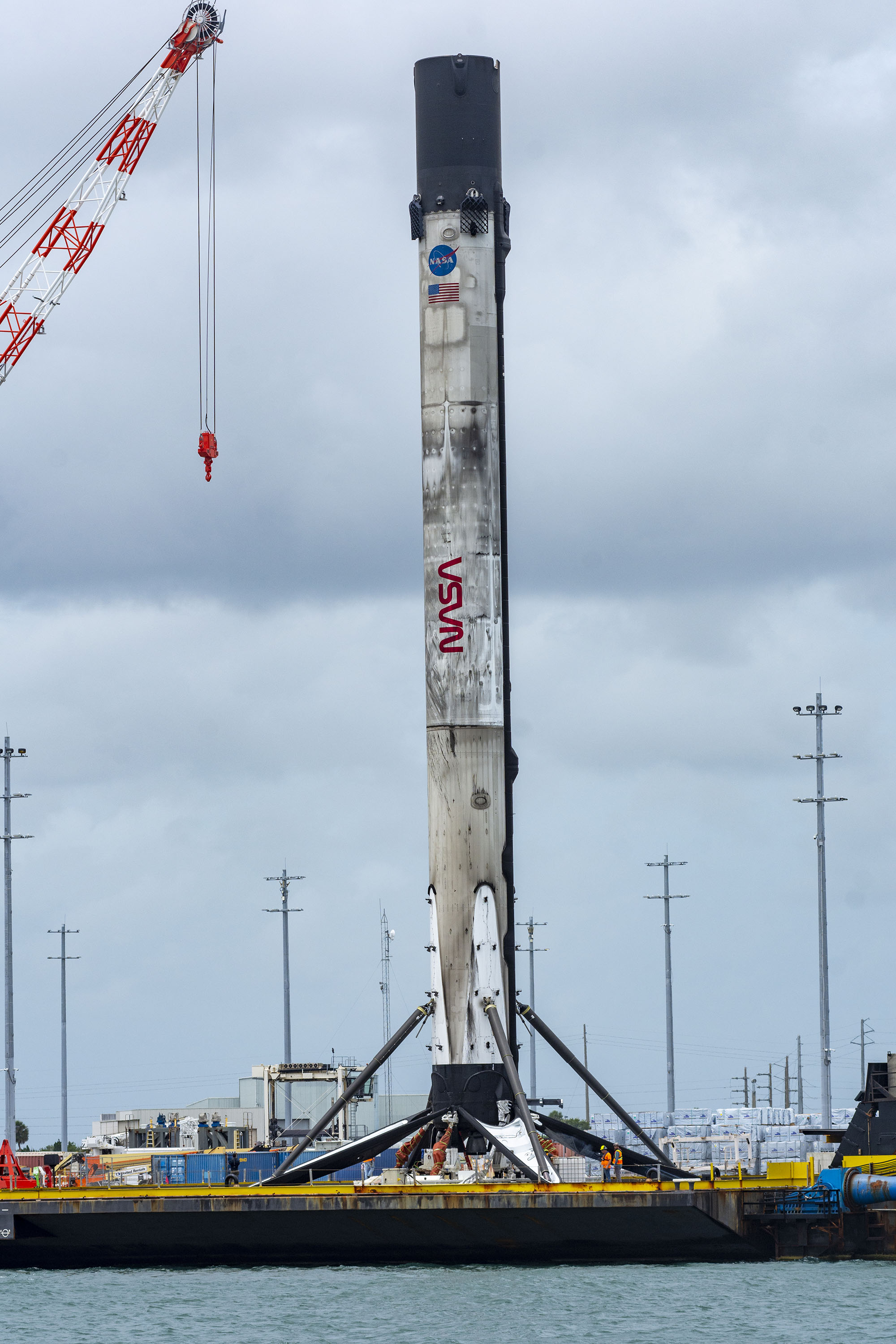
The rocket that launched SpaceX's first-ever crewed mission has returned to terra firma.
That mission, called Demo-2, lifted off atop a two-stage Falcon 9 rocket on Saturday (May 30) from NASA's Kennedy Space Center in Florida, sending NASA astronauts Bob Behnken and Doug Hurley toward the International Space Station (ISS) aboard a Crew Dragon capsule.
About 9 minutes after liftoff, the Falcon 9 first stage aced a pinpoint landing on the SpaceX drone ship "Of Course I Still Love You," which was stationed a few hundred miles off the Florida coast. The ship soon started heading back toward shore, and on Tuesday (June 2) its sea voyage came to an end: "Of Course I Still Love You," with the rocket secured to its deck, arrived at Florida's Port Canaveral, SpaceX announced via Twitter.
Related: In photos: SpaceX's historic Demo-2 test flight with astronauts
SpaceX commonly refurbishes and reflies Falcon 9 first stages, as well as the first stages of the company's Falcon Heavy megarocket. Such reuse is a key priority of SpaceX founder and CEO Elon Musk, who wants to cut the cost of spaceflight dramatically enough to enable a variety of ambitious exploration feats — especially the colonization of Mars. (The one-engine Falcon 9 second stage remains expendable at the moment, but it's not nearly as expensive as the nine-engine first stage.)
After launching @AstroBehnken and @Astro_Doug to orbit on Crew Dragon, Falcon 9 landed on the Of Course I Still Love You droneship and returned to Port Canaveral pic.twitter.com/ACov1BhgXYJune 2, 2020
We perhaps cannot assume that this particular booster will fly again, however. SpaceX had not announced its fate as of the time of this writing, and it's possible the company might want to preserve it as a historic artifact. The first Falcon 9 first stage that ever landed successfully, for example, now stands outside SpaceX's headquarters in Hawthorne, California.
And this particular Falcon 9 has a little bit of added historic appeal beyond Saturday's exploits: Emblazoned across its body is NASA's retro "worm" logo, which was brought out of retirement for Demo-2.
Get the Space.com Newsletter
Breaking space news, the latest updates on rocket launches, skywatching events and more!

Demo-2, the first orbital human spaceflight to launch from the United States since NASA's space shuttle fleet retired in 2011, is a joint SpaceX-NASA effort. The company holds a $2.6 billion contract with NASA's Commercial Crew Program to fly six operational crewed missions to the ISS, and Demo-2 is designed to fully validate Crew Dragon and the Falcon 9 for those flights.
The Crew Dragon carrying Behnken and Hurley, named Endeavour after one of NASA's old space shuttle orbiters, arrived at the ISS on Sunday (May 31). Behnken and Hurley will stay aboard the orbiting lab for one to four months; Demo-2's duration has not yet been decided.

- 'The trampoline is working!' Elon Musk's one-liner at SpaceX's big launch
- See the evolution of SpaceX's rockets in pictures
- How SpaceX's Crew Dragon Demo-2 mission will work in 13 steps
Mike Wall is the author of "Out There" (Grand Central Publishing, 2018; illustrated by Karl Tate), a book about the search for alien life. Follow him on Twitter @michaeldwall. Follow us on Twitter @Spacedotcom or Facebook.
OFFER: Save 45% on 'All About Space' 'How it Works' and 'All About History'!
For a limited time, you can take out a digital subscription to any of our best-selling science magazines for just $2.38 per month, or 45% off the standard price for the first three months.
Join our Space Forums to keep talking space on the latest missions, night sky and more! And if you have a news tip, correction or comment, let us know at: community@space.com.

Michael Wall is a Senior Space Writer with Space.com and joined the team in 2010. He primarily covers exoplanets, spaceflight and military space, but has been known to dabble in the space art beat. His book about the search for alien life, "Out There," was published on Nov. 13, 2018. Before becoming a science writer, Michael worked as a herpetologist and wildlife biologist. He has a Ph.D. in evolutionary biology from the University of Sydney, Australia, a bachelor's degree from the University of Arizona, and a graduate certificate in science writing from the University of California, Santa Cruz. To find out what his latest project is, you can follow Michael on Twitter.










